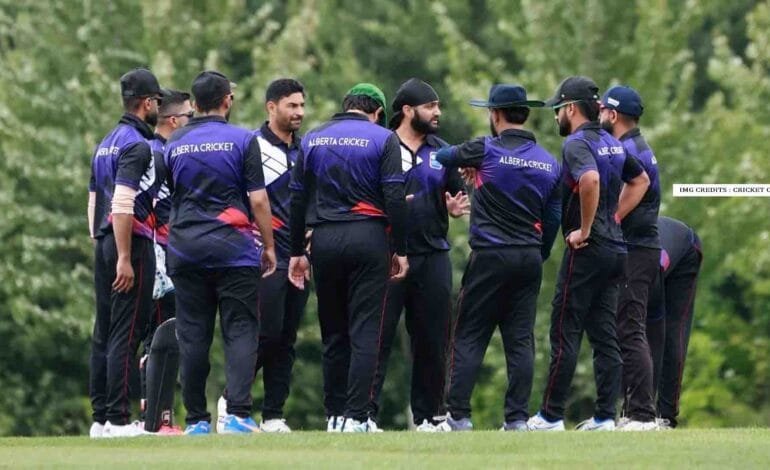The Science of the Mind in Cricket: How Brain Function Shapes Performance
By Amarinder Bhinder (Former Head Coach of Cricket Canada) In this article, we will delve into the importance of Cricket Mental Strength Training for athletes.
In this article, we will explore the key elements of Cricket Mental Strength Training to help players enhance their game.
Cricket is more than just a test of physical skill – it is a battle of the mind. Understanding how the brain functions in high-pressure situations can help cricketers improve decision-making, reflexes, and mental resilience. Mastering Cricket Mental Strength Training can separate a good player from a great one.
How the Brain Works in Cricket
Perception & Processing (Sensory Inputs)
- The brain gathers information through vision, sound, and body movement.
- The occipital lobe (vision center) and motor cortex analyze the bowler’s grip, arm speed, and ball trajectory.
- Quick processing helps players anticipate movement and react instinctively. Cricket Mental Strength Training can enhance this processing ability.
Decision-Making (Prefrontal Cortex & Basal Ganglia)
- The prefrontal cortex evaluates risks: attack, defend, or leave? Training based on cricket mental strength can enhance this evaluation.
- The basal ganglia executes pre-trained shots and bowling actions, relying on muscle memory for smooth execution.
Motor Execution (Cerebellum & Motor Cortex)
- The cerebellum fine-tunes coordination, timing, and hand-eye control.
- The motor cortex signals muscles to execute precise shots and deliveries. Mental strength training enhances this coordination.
Positive vs. Negative Mindset in Cricket
Positive Mindset (Growth Mentality)
- Confidence releases dopamine, improving focus, reaction speed, and decision-making. This is an important aspect of Cricket Mental Strength Training.
- Players with a growth mindset stay composed under pressure and trust their instincts.
Negative Mindset (Fear & Doubt)
- Anxiety increases cortisol (the stress hormone), slowing reactions and affecting coordination.
- Fear causes players to hesitate, misjudge lengths, and lose rhythm. Training the mind through cricket-focused mental exercises can reduce fear.
Confident vs. Non-Confident Players
Confident Batters & Bowlers
- Trust technique and instincts, committing fully to every action.
- Stay calm, adapt quickly, and maintain positive body language.
Non-Confident Players
- Second-guess decisions, and struggle with rhythm and execution.
- Let emotions control their game, leading to mistakes.
The Ideal Mental Approach for Cricketers
- Stay Present – Focus on the next ball, not past mistakes or future outcomes.
- Play with Intent, Not Fear – Trust your skills and follow your instincts.
- Develop Mental Resilience – Learn from failures and move on quickly.
- Control Emotions and stay Calm – Use routines (bat tapping, deep breathing, self-talk) to remain composed.
- Train Under Pressure – Simulate match situations (e.g., 10 runs needed off one over) to prepare for real-game pressure. This is where Cricket Mental Strength Training can prove invaluable.
Cricket is a Mental Battle as Much as a Skill Game
A strong mind creates a strong cricketer. Training the brain is as essential as practicing batting, bowling, or fielding. Cricketers who develop a mental edge through Cricket Mental Strength Training will dominate under pressure and perform at their best when it matters the most.
By understanding how the brain works, players can enhance focus, decision-making, and execution – turning talent into match-winning performances.



